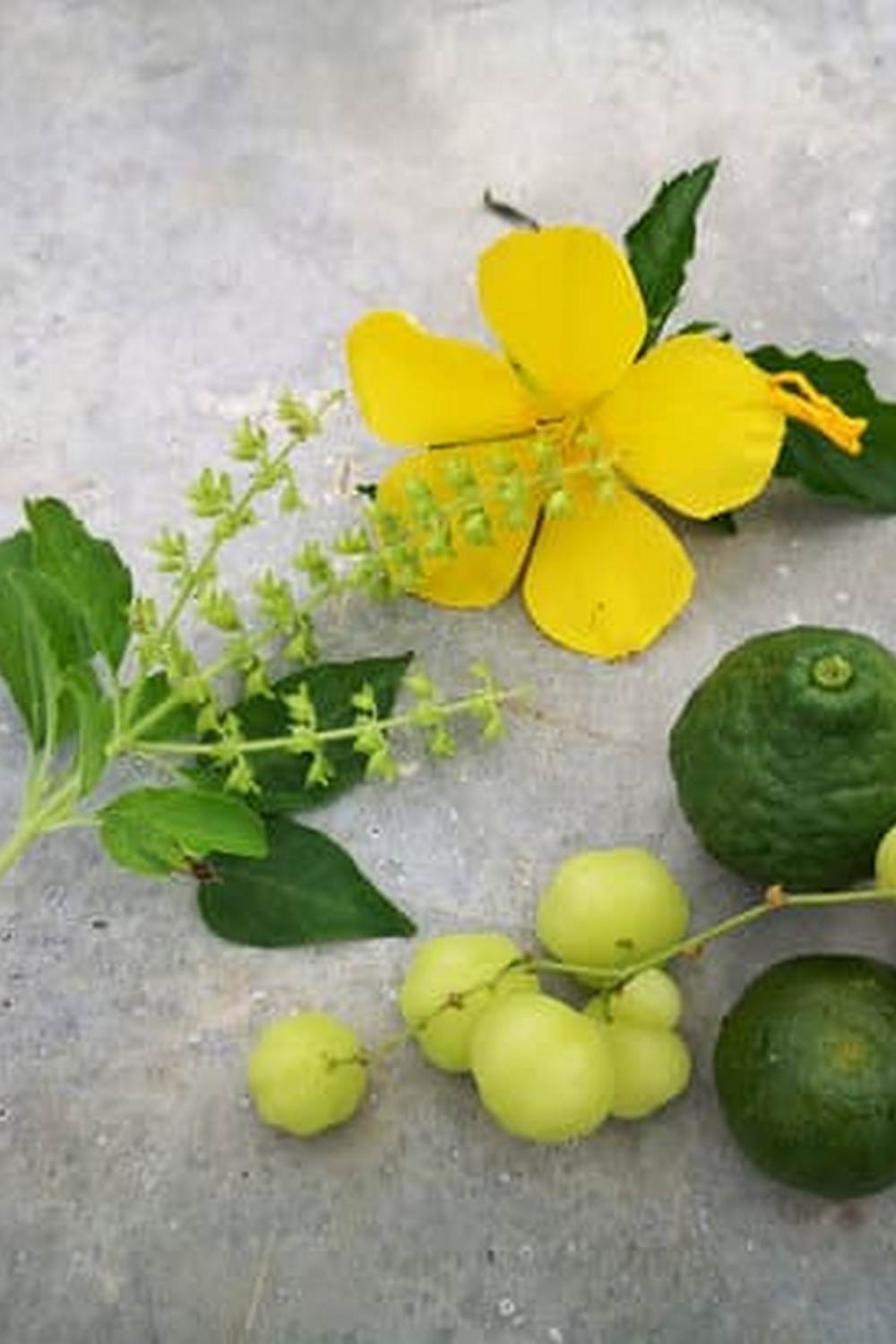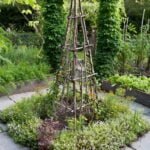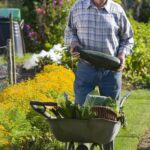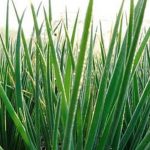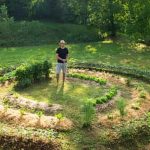Vegetable gardening in the desert southwest presents a unique set of challenges and rewards for gardeners. The arid climate, intense sunlight, and sandy soil can make growing vegetables in this region quite different from other parts of the country.
However, with careful planning and the right strategies, it is possible to cultivate a successful garden full of fresh produce. In this article, we will explore the key aspects of vegetable gardening in the desert southwest, from understanding the climate and soil to tips for watering, pest control, and harvesting.
The desert southwest region is known for its hot and dry weather conditions, which can be both a blessing and a curse for vegetable gardeners. While the lack of frequent rain may pose challenges for watering plants, the abundance of sunshine provides ample opportunities for growth.
Understanding how to work with these conditions is essential for cultivating a thriving vegetable garden in this unique environment. By choosing the right vegetables that are well-suited to the desert climate and implementing proper irrigation techniques, gardeners can overcome these hurdles and enjoy a bountiful harvest.
One of the key factors in successful vegetable gardening in the desert southwest is selecting plant varieties that are best suited to thrive in this environment. From heat-tolerant tomatoes to drought-resistant peppers, there are plenty of options available for those looking to grow their own produce in this region.
Additionally, implementing shade structures and sun protection measures can help protect delicate plants from scorching temperatures. By following these guidelines and incorporating innovative techniques tailored to the desert landscape, gardeners can create a flourishing oasis of vegetables amidst the arid surroundings.
Understanding the Climate and Soil in the Desert Southwest for Vegetable Gardening
The success of vegetable gardening in the desert southwest heavily relies on understanding the unique climate and soil conditions of the region. The desert southwest is characterized by hot, dry summers and mild winters, making it a challenging environment for growing vegetables. The soils in this region are often sandy, rocky, and have low organic matter content. However, with proper knowledge and techniques, gardeners can still create thriving vegetable gardens in this arid landscape.
In order to effectively garden in the desert southwest, it is essential to choose vegetables that are well-suited to the climate and soil conditions of the region. Drought-resistant crops such as tomatoes, peppers, eggplants, and squash tend to thrive in the hot and dry conditions of the desert.
Additionally, selecting varieties that have shorter growing seasons or are heat-tolerant can increase the chances of a successful harvest. Understanding which vegetables can withstand the intense sun exposure and limited water availability is crucial for a flourishing garden.
Furthermore, amending the soil with organic matter such as compost or mulch can help improve soil structure and fertility in desert southwest vegetable gardens. Adding organic materials not only increases water retention but also provides essential nutrients for plant growth.
Implementing raised beds or container gardening can also aid in better moisture control and drainage. By taking into consideration the specific climate and soil characteristics of the desert southwest, vegetable gardeners can set themselves up for a bountiful harvest despite the challenging conditions.
Choosing the Right Vegetables for a Successful Garden in the Desert Southwest
When it comes to vegetable gardening in the desert southwest, selecting the right vegetables that can thrive in this unique environment is crucial for a successful garden. The arid climate, intense sunlight, and alkaline soil found in this region present challenges that need to be considered when choosing which plants to grow. By selecting vegetables that are well-suited to the desert conditions, gardeners can increase their chances of a bountiful harvest.
Heat-Tolerant Vegetables
In the desert southwest, extreme heat is a common factor that can impact vegetable plants. Opting for heat-tolerant vegetables like tomatoes, peppers, eggplants, okra, and sweet potatoes can withstand the high temperatures typically experienced in this region. These vegetables have adapted mechanisms to thrive in hot climates and are ideal choices for desert gardeners looking for resilient crops.
Water-Efficient Vegetables
Given the limited water availability in the desert southwest, choosing water-efficient vegetables is essential for conserving resources while still growing a productive garden. Vegetables such as radishes, carrots, zucchini, and Swiss chard have shallow roots and are able to efficiently utilize water without requiring frequent irrigation. By prioritizing these types of vegetables in your garden, you can maximize water usage efficiency and reduce the overall water consumption of your vegetable gardening in the desert southwest.
Drought-Resistant Vegetables
To further enhance the success of your vegetable garden in the desert southwest, consider planting drought-resistant vegetables that can withstand periods of dryness without compromising their growth. Crops like beans, peas, cucumbers, and melons have developed adaptations to survive drought conditions and are excellent choices for desert gardeners seeking resilient plants.
By incorporating these drought-resistant vegetables into your garden bed, you can ensure a more sustainable and low-maintenance approach to vegetable gardening in the challenging environment of the desert southwest.
Tips for Watering and Irrigation in a Dry Climate
When it comes to vegetable gardening in the desert southwest, one of the most critical aspects to consider is proper watering and irrigation. The arid climate and high temperatures in this region can quickly deplete moisture from the soil, making it essential to establish a watering routine that meets the needs of your plants without wasting water. Here are some tips for effective watering in a dry climate:
- Utilize drip irrigation systems: Drip irrigation delivers water directly to the base of plants, minimizing evaporation and ensuring that each plant receives an adequate amount of moisture. This method is particularly efficient in desert environments where water conservation is crucial.
- Water deeply and infrequently: Instead of frequent shallow watering, it is more beneficial to water deeply and less frequently. This encourages plants to develop deeper root systems as they search for moisture, making them more resilient during hot and dry periods.
- Monitor soil moisture levels: Invest in a soil moisture meter or simply use a finger test to determine when your plants need water. Stick your finger into the soil up to the second knuckle – if it feels dry, it’s time to water. Avoid overwatering, as this can lead to root rot and other issues.
In addition to these watering tips, consider collecting rainwater or graywater for use in your vegetable garden. Rain barrels can help capture runoff during sporadic desert storms, providing a sustainable source of irrigation for your plants. With careful planning and attention to watering practices, you can cultivate a thriving vegetable garden in the challenging environment of the desert southwest.
- Use mulch to retain moisture: Covering the soil with mulch helps reduce evaporation and maintain consistent soil moisture levels. Organic materials like straw or wood chips not only help retain moisture but also improve soil structure over time.
- Time your watering wisely: Watering early in the morning or late in the evening when temperatures are cooler can minimize evaporation losses and ensure that plants have access to water when they need it most. Avoid midday watering when heat levels are at their peak.
- Adjust watering based on plant needs: Different vegetables have varying water requirements depending on their growth stage and sensitivity to drought stress. Research the specific needs of each crop you are growing and tailor your watering schedule accordingly.
By implementing these strategies for efficient watering and irrigation in a dry climate, you can optimize water usage while promoting healthy growth and abundant harvests in your desert southwest vegetable garden.
Utilizing Shade and Sun Protection for Vegetable Plants
One of the key components to successful vegetable gardening in the desert southwest is utilizing shade and sun protection for your plants. With the scorching temperatures and intense sunlight in this region, providing adequate protection for your vegetable garden is essential for their health and productivity. Here are some tips on how to effectively shield your vegetables from the harsh desert sun:
- Erecting a Shade Structure: Consider installing a shade cloth or building a simple structure with materials like bamboo poles and cloth to create a shaded area over your vegetable beds. This will help prevent sunburn on plant leaves and reduce water evaporation from the soil.
- Planting Strategically: Take note of the path of the sun throughout the day and plan your garden layout accordingly. Position taller plants or trellises on the western side of your garden beds to provide shade for smaller vegetables during the hottest part of the day.
- Using Natural Shade: Utilize existing structures like trees, fences, or buildings to cast shadows over your garden during peak sunlight hours. Be mindful of potential obstacles that may block light completely, which could hinder plant growth.
By implementing these shade and sun protection strategies, you can help your vegetable plants thrive in the harsh desert climate of the southwest. Remember that maintaining a balance between sunlight exposure and shade is crucial for achieving optimal growth and yield in your desert vegetable garden. With careful planning and proactive measures, you can create an oasis of productivity even in the arid conditions of this unique environment.
Pest Control and Disease Management Strategies for Desert Southwest Gardening
When it comes to vegetable gardening in the desert southwest, dealing with pests and diseases can be a significant challenge due to the unique climate and environmental conditions. One essential strategy for managing pests is to encourage natural predators such as ladybugs, lacewings, and beneficial insects that feed on common garden pests. Avoiding broad-spectrum pesticides can help preserve these natural predators while still effectively controlling harmful insects.
In addition to natural predators, implementing cultural practices can also aid in pest control. Regularly inspect plants for signs of infestation, such as holes in leaves or visible bugs, and promptly remove any affected plant parts. Proper spacing between plants can minimize the spread of pests, as overcrowded vegetation provides hiding spots and easy pathways for insects. Furthermore, rotating crops each season can disrupt pest life cycles and reduce the buildup of populations that target specific vegetables.
When it comes to disease management in vegetable gardens in the desert southwest, prevention is key. Selecting disease-resistant varieties when available can provide an added layer of protection against common pathogens. Proper sanitation practices, including removing and disposing of infected plant debris, can prevent the spread of diseases within the garden. Additionally, practicing crop rotation can help mitigate soil-borne diseases by reducing the buildup of pathogens specific to certain plant families.
| Pest Control Strategies | Disease Management Techniques |
|---|---|
| Encourage natural predators | Select disease-resistant varieties |
| Implement cultural practices | Practice proper sanitation |
| Regular inspection of plants | Rotate crops regularly |
By combining these strategies along with diligent monitoring and early intervention when issues arise, vegetable gardeners in the desert southwest can effectively manage pests and diseases to promote healthy growth and abundant harvests from their gardens. Remember that prevention is often easier than treatment once problems have taken hold, so proactive measures are crucial for maintaining a thriving garden in this unique environment.
Importance of Mulching and Soil Amendments in Desert Vegetable Gardens
Benefits of Mulching in Desert Vegetable Gardens
Mulching is a crucial practice for vegetable gardening in the desert southwest. In this arid climate, mulch plays a vital role in conserving soil moisture by reducing evaporation and protecting the soil from the scorching sun.
Organic mulches, such as straw, wood chips, or shredded leaves, not only help retain moisture but also contribute to improving soil fertility as they break down over time. Additionally, mulch acts as insulation for plant roots against temperature extremes, keeping them cooler during hot days and warmer at night.
Importance of Soil Amendments in Desert Gardening
Soil amendments are essential for maintaining healthy and productive vegetable gardens in the desert southwest. The region’s sandy or clay-like soils often lack organic matter and nutrients necessary for plant growth.
Incorporating compost, aged manure, or other organic materials into the soil can enhance its structure, increase water retention capacity, and provide essential nutrients for plants. Furthermore, soil amendments help buffer pH levels and improve microbial activity in the soil, creating a more hospitable environment for vegetable crops to thrive.
Implementing Sustainable Practices With Mulching and Soil Amendments
Incorporating sustainable practices like mulching and soil amendments not only benefits your vegetable garden but also contributes to environmental conservation in the desert southwest. By using organic mulches and composted materials, gardeners can reduce their reliance on synthetic fertilizers and pesticides while promoting long-term soil health.
These practices support biodiversity in the garden ecosystem by providing habitat for beneficial organisms like earthworms and decomposers. Overall, integrating mulching and soil amendments into your gardening routine is a holistic approach to achieving success in vegetable gardening in the unique challenges of the desert southwest climate.
Harvesting and Storing Vegetables in the Desert Southwest
When it comes to vegetable gardening in the desert southwest, proper harvesting and storing techniques are crucial to ensure that your hard work pays off. Harvesting at the right time is key to getting the best flavor and nutrition from your vegetables.
In this arid region, where temperatures can soar, it’s essential to pick your vegetables early in the morning or late in the evening when they are at their freshest and have not been exposed to as much heat.
Once you have harvested your vegetables, proper storage is vital to maintain their quality for longer periods. Due to the dry climate of the desert southwest, it’s important to store vegetables in a cool, dark place to prevent them from drying out too quickly. Root vegetables like carrots and beets can be stored in a cellar or pantry with good ventilation, while leafy greens and fruits should be kept in a refrigerator crisper drawer to retain their crispness.
Another important aspect of storing vegetables in the desert southwest is avoiding excess moisture, as it can lead to rotting. Make sure your storage area is well-ventilated to prevent humidity buildup.
For longer-term storage, consider preserving methods such as canning or freezing to enjoy your homegrown produce throughout the year. Whether you are enjoying a bountiful harvest or planning for future meals, proper harvesting and storing techniques will help you make the most of your vegetable garden in this unique climate.
| Vegetable | Optimal Harvest Time |
|---|---|
| Tomatoes | When fully ripe but still firm |
| Zucchini | When young and tender |
Community Resources and Organizations for Vegetable Gardeners in the Desert Southwest
Living in the desert southwest presents unique challenges for vegetable gardening enthusiasts. However, there are various community resources and organizations available to provide support and guidance for individuals looking to cultivate a successful garden in this arid region. One such organization is the Desert Botanical Garden, located in Phoenix, Arizona. This botanical garden offers workshops, classes, and resources specifically tailored to educate and assist gardeners in navigating the difficulties of growing vegetables in the desert.
For those seeking additional support and knowledge about vegetable gardening in the desert southwest, joining a local gardening club can be highly beneficial. These clubs often host meetings, events, and plant exchanges where members can share tips, tricks, and experiences related to cultivating a garden in this challenging environment. Furthermore, they provide a sense of community and camaraderie among like-minded individuals who share a passion for gardening despite the harsh conditions of the desert climate.
Another valuable resource for vegetable gardeners in the desert southwest is cooperative extension programs offered by universities such as the University of Arizona Cooperative Extension. These programs provide research-based information on topics ranging from soil health to pest management, tailored specifically to help gardeners succeed in arid regions like the desert southwest.
By taking advantage of these resources and organizations, vegetable gardeners can arm themselves with the knowledge and support needed to overcome obstacles and create thriving gardens despite the challenging conditions.
Conclusion
In conclusion, vegetable gardening in the desert southwest presents its own set of challenges and opportunities. By understanding the climate, soil, and unique conditions of the region, gardeners can successfully grow a variety of vegetables with proper planning and care. Choosing the right vegetables that are well-suited to the arid environment, implementing efficient watering techniques, providing adequate shade and sun protection, and managing pests and diseases are all important factors in creating a thriving garden in this region.
It is essential for gardeners in the desert southwest to prioritize water conservation and utilize methods like drip irrigation systems to ensure that their plants receive adequate moisture without excessive waste. Additionally, incorporating mulching and soil amendments can help improve soil quality, retain moisture, and provide essential nutrients for healthy plant growth. By taking proactive measures to care for the soil and plants, gardeners can enhance the productivity of their vegetable gardens in this challenging environment.
Lastly, connecting with community resources and organizations dedicated to vegetable gardening in the desert southwest can provide valuable support, knowledge sharing, and networking opportunities. Whether through local gardening clubs, educational workshops, or online forums, gardeners can learn from others’ experiences, exchange tips and tricks, and stay informed about best practices for successful vegetable gardening in this unique region. With dedication, innovation, and a willingness to adapt to changing conditions, gardeners can indeed thrive in the desert southwest vegetable garden.
Frequently Asked Questions
What Is the Easiest Vegetable to Grow in the Desert?
The easiest vegetable to grow in the desert is probably the cucumber. Cucumbers require a lot of water, but they thrive in hot, sunny conditions which are abundant in the desert. Proper watering and providing some shade can help them grow successfully.
How Do You Make a Vegetable Garden in the Desert?
Making a vegetable garden in the desert requires careful planning and consideration of the extreme climate conditions. To start, it’s important to choose drought-resistant vegetables like tomatoes, peppers, or squash. Using mulch and drip irrigation can help conserve water and protect plants from intense heat.
What Vegetables Are Grown in the Southwest?
Vegetables commonly grown in the Southwest include chili peppers, corn, beans, squash, and tomatoes. These vegetables are well-suited to the arid climate of states like Arizona, New Mexico, Nevada, and parts of California. They are chosen for their ability to withstand high temperatures and low water availability without sacrificing flavor or nutrition.

If you’re looking to get into vegetable gardening, or are just looking for some tips on how to make your current garden better, then you’ve come to the right place! My name is Ethel and I have been gardening for years. In this blog, I’m going to share with you some of my best tips on how to create a successful vegetable garden.

